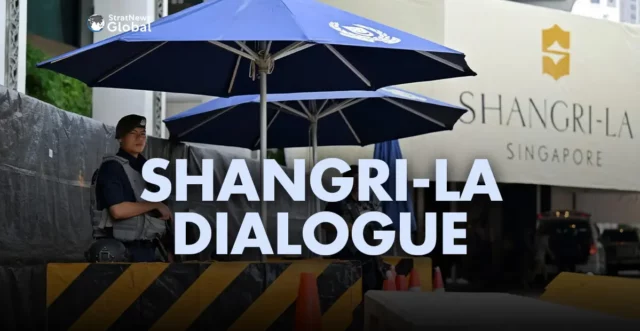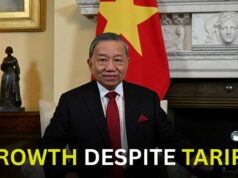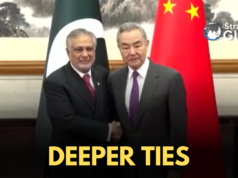Shangri La is a fictional, mythical paradise-like place in popular culture, believed to be located in the peaceful Tibetan mountains. Little would the promoters of the famous Shangri La Hotels and Resorts in Singapore know that the name they adopted for their sprawling property in 1971, would one day become synonymous with a premier defence and security global summit, the Shangri-La Dialogue, which has been regularly organised in Singapore, since 2002.
The Shangri-La Dialogue held by the International Institute for Strategic Studies (IISS) based in London, has steadily evolved as an annual “Track One” inter-governmental security forum. It is a veritable congregation of the Who’s Who of national defence and security policymaking across the Indo-Pacific Region (the organisers prefer the term Asia Pacific though).
Take for instance the current edition (the 21st ) that kicked off on 31 May and will run for three days. President of the Philippines Ferdinand R. Marcos Jr., Indonesia’s President-elect Prabowo Subianto and US Secretary of Defense Lloyd J. Austin are among the key speakers.
There will be scores of other ministers and senior officials in attendance, representing over 40 countries of the region. This has been a trend for the past few years. For reasons not clear, India does not have any notable presence at the conference this year.
In recent years, I remember only a few occasions of the SLD when India participated at a senior ministerial level. The first was in 2016, when the then Defence Minister Manohar Parrikar delivered an address, and one in 2018, when Prime Minister Narendra Modi laid out India’s vision of the Indo-Pacific in his widely acclaimed speech. In earlier times, India had sporadically deputed junior minsters for the dialogue. For example, in 2015 India had deputed Rao Inderjit Singh, who then held the portfolio of Minister of State for Defence.
Curiously, India did not show up with any notable representation in the 2017 and 2019 editions, when most countries that matter in the region deputed heavyweights to the SLD. These were the years when China was conspicuously flexing its muscles in the South China Sea. In 2017, Pakistan deputed its Chairman, Joint Chiefs of Staff Committee, a serving four-star general, as seen again in 2023 and in the current edition.
I have had the opportunity, thanks to invitations from IISS, to attend the SLD frequently and in my view its value lies primarily in its format. It is conceptualised as a Track-I event and yet, it has an air of informality and comes without any conventional trappings like joint statements or summit declarations. The participation of delegates and interaction is voluntary and free-wheeling. One can pick and choose what one wishes to attend, speak and listen. Having attended numerous editions of the SLD, I can vouch for its attractiveness and appeal among attendees of all hues.
I have seen a serving four-star admiral of the United States attending the dialogue in formal civil clothes and a State Councilor Minister of Defence of China attending the same event in military uniform! Both made their points and observations emphatically without disturbing the congenial atmosphere.
What makes the SLD particularly interesting for defence and security policymakers is the opportunity of networking at a fairly high level and exchange of views in an informal, idyllic setting. In essence, it can be used as a forum to promote defence diplomacy.
Of course, the SLD offers a powerful platform for nations to articulate their views on key security concerns affecting the region, as also opportunities to convey strong messages to rivals, couched in polite language. Potentially, the dialogue could also serve as a platform for peace building and Track-II “pull-aside” bilateral discussions if used wisely by nations.
China regularly deputes its Minister of National Defence and State Councilors, in their military uniforms. General Wei Fenghe attended the 2019 SLD and General Li Shangfu attended the 2023 SLD. In recent years, China hasn’t skipped any edition of SLD, except in 2020 and 2021 when it wasn’t held due to the Covid19 pandemic.
Every edition of SLD witnesses strong representation at the ministerial and senior military official levels from regional and even extra-regional nations like Canada and UK. India has occasionally deputed senior bureaucrats and diplomats involved in defence and security policymaking, however, rarely has New Delhi deputed a military leader to attend the SLD.
The only exception I remember was the participation of Vice Admiral Biswajit Dasgupta, the then Eastern Naval Commander who was a co-panelist with Admiral John Aquilino, Commander of the US Indo-Pacific Command, in the 2022 edition.
A few days ago, I read the news about India’s Chief of Defence Staff stating at a book-launch function that “absence of written National Security Strategy doesn’t mean that India doesn’t have one”. I reflected upon that statement and thought that it was emblematic of India’s strategic culture of doing things without much ado and letting actions speak for themselves. But an important component of an aspiring nation’s strategic culture is its ability to interface with global strategic discourse, in an effective and impactful way.
Given the churn in regional security dynamics in East Asia, as also the long-term impact of ongoing conflicts in Europe and West Asia, New Delhi would be well advised not to let go of such valuable opportunities for its senior military and civilian leaders to participate and make first hand observations.
Alongside the World Economic Forum’s annual summit at Davos and Munich Security Conference for International Security, the SLD is a valuable opportunity for India to rub shoulders with the movers and shakers behind global power shifts. While the insular and diffident approach of the earlier decades now appears to have diminished, New Delhi has yet to master the ways of strategic communication at high wire summit security events.
Ideally, a minister, accompanied by a senior military official and a senior diplomat or bureaucrat should represent India at the SLD and partake in its eclectic agenda. The SLD also has a Southeast Asian Young Leaders’ Programme which brings together strategic thinkers of the new generation from the region.
Alas, India is inconspicuous in the ongoing edition of SLD, for reasons that are not evident. Punching below its weight, most would say.
Nitin A. Gokhale is a media entrepreneur, one of South Asia's leading strategic affairs analyst and author of over a dozen books so far on military history, insurgencies and wars.
Starting his career in journalism in 1983, he has since led teams of journalists across media platforms.
A specialist in conflict coverage, Gokhale has covered the insurgencies in India’s North-East, the 1999 Kargil conflict and Sri Lanka’s Eelam War IV between 2006-2009.
Gokhale now travels across the globe to speak at seminars and conferences, and lecture at India’s premier defence colleges. He has founded three niche portals, Bharatshakti.in, stratnewsglobal.com and Interstellar.news.





